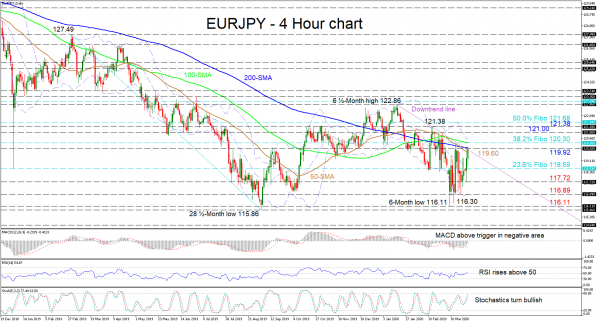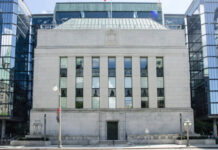EURJPY is currently tackling the 50-day simple moving average (SMA) and the downtrend line drawn from January 16, after buyers resurfaced last week pivoting the price at the lower Bollinger band around 116.89. The pick-up in positive momentum is also reflected in the short-term oscillators.
The MACD, in the negative zone, has moved above its red trigger line and approaches the zero spot, while the ascending RSI has climbed above its neutral mark. Additionally, the rising stochastic lines have turned bullish and are heading towards the 80 level. That said some caution is warranted as the 50-day SMA has recently completed a bearish crossover of the 200-day SMA, and the 100-day SMA has turned slightly down, confirming the move.
If the downtrend line and the 200-day SMA hold as a barrier, they could direct the price towards the mid-Bollinger band and the 118.59 level underneath – which is the 23.6% Fibonacci retracement of the down leg from 127.49 to 115.86 – ahead of the low of 117.72. Moving down, the 116.89 obstacle coupled with the lower Bollinger band could hinder the price from revisiting the six-month trough of 116.11.
Alternatively, a more sustained drive upwards would be required to overcome the downtrend line and the immediate region above – involving the 119.92 resistance and the 38.2% Fibo of 120.30, fortified by the 200- and 100-day SMAs respectively – followed by the upper Bollinger band overhead. Conquering these obstacles, attention could shift towards the 121.00 and 121.38 peaks and nearby 50.0% Fibo of 121.68.
Overall, the short-term bias remains negative below the downtrend line and the 121.38 level. However, a move above could see a neutral-to-bullish bias returning in the short- and medium-term.













